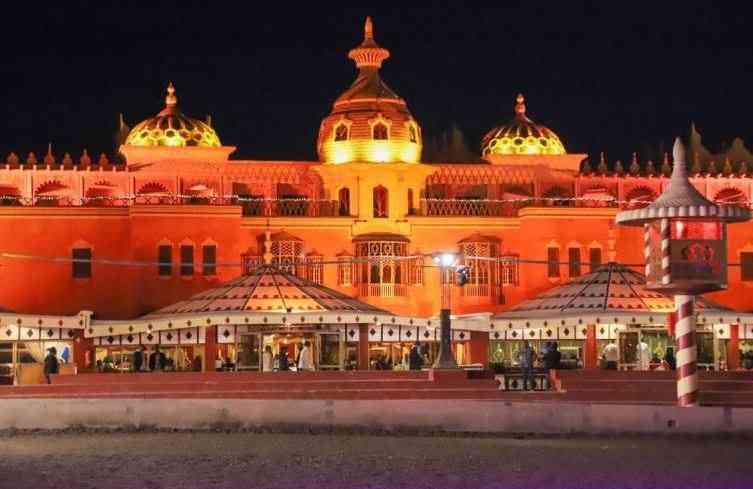
Attending the FIFA World Cup finals in the capital Rabat when Wydad Casablanca played against Saudi side Al Hilal, one could not help, but notice the art in football. Arriving at the manicured stadium, the Mouley Abdella is a beehive of activity as Wydad supporters. The singing and chanting is heartwarming, the ecstasy is palpable and the red team colours engulf the stadium. One can hardly notice Al Hilal supporters in some small corner in blue colours.
A well-delivered goal by El Amloud sent the stadium into wild celebration, with the supporters playing with colours to form the name of the club in Arabic and the singing and dance reaching maximum decibel levels.
It is this carnival experience that brings so many football fans into Moroccan stadiums whenever there is a match in Tangier, Rabat, Marrakech, Agidar or Fez - the magnificent arenas currently bidding for the 2025 AFCON.
Travelling across the cities and the countryside, one cannot fail to notice the rich artistic expression in architecture, culinary arts and music besides sports. A visit to the Medina in Fez and Tangier, the historical Moroccan city is dominated by mud brick known as pise. It dates back to the first century and has heavy Islamic influence in design. The antique pise is a heritage of the barbers since the first independent Moroccan states in the first century.
The handiwork in the floral patterns as well as the arching doorways and roofs is a cultural stamp for many a Moroccan building. Yet this intricate and colourful pattern is not limited to the building culture, it is the signature of Moroccan traditional garbs for both men and women. On Friday, Moroccan men proudly don the national garb resplendent with a hood with leather slippers to match as they savour a plate of couscous after midday prayers. But there is an omnipresent part of every Moroccan meal - the Moroccan Achai or tea served in Arabian silver urns known as Berrad, ever steaming hot with fresh green na'na spearmint leaves.
A trip down Marrakech takes one into the city's Chez Ali Restaurant. The place, which looks like India's mini-Taj Mahal has a holy and ancient ambience. One is welcomed by soulful Moroccan cultural dancers playing the signature five-stringed lyre, the oud. Five groups are performing simultaneously and atop the entrance, a trumpet is playing in harmony with the band downstairs as if announcing to the whole city our arrival.
At Chez Ali, a full lamb is prepared, akin to nyama choma only that the fire is from the hearth and radiates from a distance, resulting in a mouth-watering and tender delicacy. A similar treat happened at Rias Fes - a hilltop restaurant overlooking the city of Fez on the slopes of the Atlas Mountains.
"We sing Oriental Arabian music with a touch of Barber delight into our music," says Oriss Habab, who plays the violin and is a soloist for the cultural music band Angham Fes.
He and colleagues Kunle Solaja and Aziz Arfaoui brought the roof down with their repertoire for the night and all guests were on their feet dancing and singing along.
"Most of the songs played tonight were celebration songs and common in our weddings," says Aziz the organist.
At Idou Anfa, in the heart of Casablanca, a veteran pianist originally from Fes serenades patrons with classical as well as R&B music on the piano every night. A special request to play Ludwig van Beethoven's classic Albumblatt Fur Elise is granted instantly and what an amazing rendition he gives!
The rich music heritage is manifested also in Ahmed Chawki the 2016 World Cup Anthem icon who participated in the year's theme song Magic in the Air. The highly acclaimed Moroccan celebrity decided to cross the Spanish border at a tender age when his talent was discovered by a popular Spaniard producer and he went ahead to sing Habib I Love You, a collabo with Moroccan-Swedish musician RedOne featuring Pitbull.
"I sing for passion and the love of the family," says Ahmed whose popularity has soared over the years with over 300 million views of his YouTube video Magic in the Air.
 The Standard Group Plc is a multi-media organization with investments in media
platforms spanning newspaper print
operations, television, radio broadcasting, digital and online services. The
Standard Group is recognized as a
leading multi-media house in Kenya with a key influence in matters of national and
international interest.
The Standard Group Plc is a multi-media organization with investments in media
platforms spanning newspaper print
operations, television, radio broadcasting, digital and online services. The
Standard Group is recognized as a
leading multi-media house in Kenya with a key influence in matters of national and
international interest.



